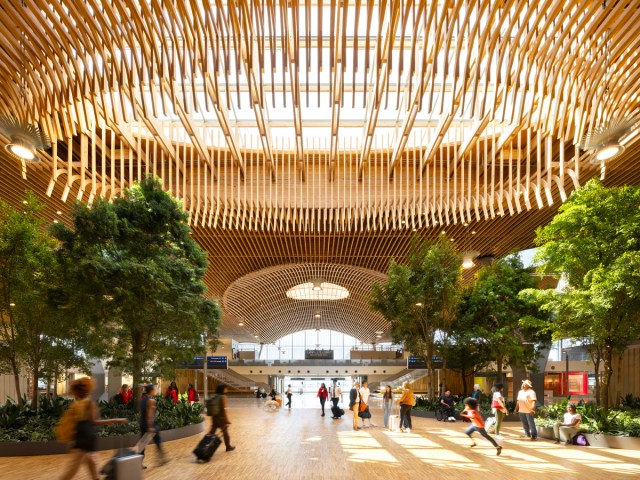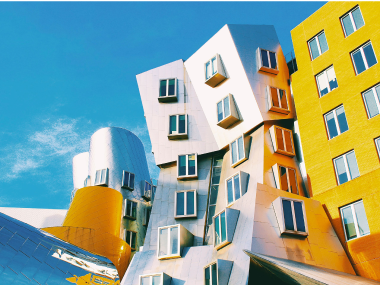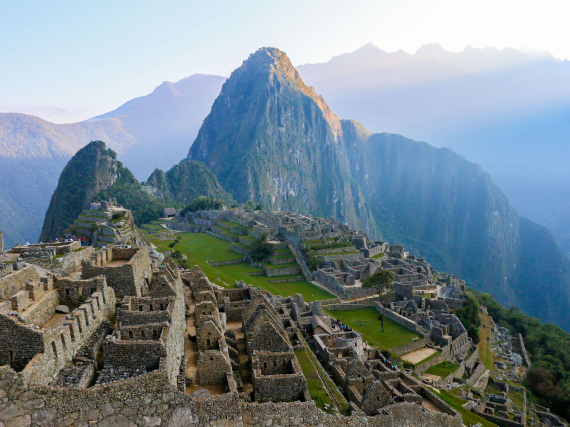Ask a frequent flyer about the most beautiful airport they’ve traveled to, and they might mention Singapore Changi — recently ranked the best airport by Skytrax for the 13th year — or Hamad International Airport in Doha, thanks to its impressively modern architecture and excellent shopping. But what are the chances they name an airport in the U.S.? America’s airports are certainly among the world’s busiest, but they don’t exactly have a reputation for aesthetics. Enter Portland International Airport’s stunning new redesign, which may just change opinions about how beautiful an American airport can be. Below, peek inside the new terminal and explore how it came to fruition.
A “Game Changer”

If you’re a fan of architecture, construction, and engineering, you may already be familiar with the B1M, which says it’s the world’s largest and most subscribed-to video channel covering those topics. They know what they’re talking about when it comes to incredible design — which is why it was particularly noteworthy when they proclaimed, “America has finally built a beautiful airport,” after Portland International Airport (PDX) debuted its new terminal in 2024.
The experts at B1M went on to call the new PDX a “game changer” that’s “up there with the most beautiful airports in the world.” The $2 billion project was not only the most expensive public project in Oregon’s history but also the largest mass timber project of its kind in the world.
The use of wood was intentional. “The Pacific Northwest is known for its timber background, so we took inspiration from the forest of our region,” project manager George Seaman told the B1M. “When people walk around the terminal building, we want them to know that sense of place, that this is the Pacific Northwest and not anywhere else in the country.”
As soon as you step into the new terminal, your eyes are drawn upward to the massive wooden roof. Just how massive? According to ZGF Architects, the firm responsible for the redesign, the roof covers a whopping 400,000 square feet and weighs 18 million pounds.
ZGF’s website says PDX is the first major airport in the country to incorporate a mass timber roof, which was “inspired by the sun filtering through a forested setting.” The effect is achieved through the clever lattice design and strategically placed skylights that illuminate 60% of the terminal with natural light. The new roof is also noteworthy for its sustainability, particularly since wood naturally sequesters carbon — a fitting feature for America’s greenest city.
Further adding to the sense of being in a forest are walkways filled with the greenery the Pacific Northwest is so well known for. There are over 5,000 plants placed throughout the terminal, including 72 large trees that measure up to 25 feet tall.
How the New PDX Was Built

While the PDX terminal was no doubt a massive undertaking, even more impressive is the fact that the airport remained fully operational while the three-year project was underway. According to the B1M, the building was split into three sections: the main terminal and two concourses, each weighing between 300 and 700 tons.
The roof, the centerpiece of the project, was built on a separate construction site at the end of the runway. After it was fabricated, crews had to transport the roof a mile on wheels over to the terminal site, traveling approximately 1 mph; once there, they lifted the roof and put it in place. Because the terminal was still functioning during construction, the work had to take place each night between midnight and 3:30 a.m.
And this is only phase one of the project: A second phase, estimated to be complete by the end of 2025, will introduce new restaurants and shops, additional escalators, and new waiting areas.
Local Touches Throughout

Portland Airport’s redesign allowed it to double its passenger capacity and modernize its facilities, including more spacious TSA checkpoints, but it’s clear that a lot of thought went into how passengers would experience the new spaces.
In a press release, Curtis Robinhold, executive director for the Port of Portland, explained, “Our focus throughout this entire project was: How do we reflect the pride and love we all have for the region, in the new PDX? And that question drove every decision. To work with locally owned small businesses using local materials, to fill the new PDX with local art and shops from our favorite neighborhoods — and, of course, to bring back the iconic carpet” (a beloved feature of the previous terminal).
The airport said that the 20 new eateries and shops introduced with the redesign are all locally owned (with 60% of them being woman- or minority-owned) and showcase regional favorites. Think: craft brews at Loyal Legion, coffee from Portland Coffee Roasters, and books from Powell’s Books, a Portland institution and the world’s largest independent bookstore. The airport also installed video walls with 24-hour art displays of Oregon landscapes.
“Every part of the new terminal design aims to enhance the traveler journey and reduce stress,” ZGF managing partner Sharron van der Meulen said. “Travelers are immediately greeted with expansive views to the airfield, abundant natural light, and lush interior landscapes that create a sense of wonder and delight and evoke a walk through a Pacific Northwest forest.” You might even come across a therapy llama or alpaca from a nearby farm, too.
Competition Is Heating Up

While PDX has taken the crown for America’s most beautiful airport, at least in our eyes, it’s not the only game in town. In recent years, several U.S. airports have undertaken multibillion-dollar expansion projects to upgrade their passenger experience.
Many are taking the same local-inspired approach as PDX. New York LaGuardia’s new Terminal B, completed in 2022, is a far cry from the cramped, outdated space that travelers were used to before the remodel. The $8 billion transformation added a stunning central water feature, local art installations, tons of natural light, and upgraded concessions, including NYC favorites like Brooklyn Diner and Hill Country BBQ.
In 2024, the new Kansas City International Airport took home the “Project of the Year” award from the Design-Build Institute of America (DBIA) Mid-Atlantic Region, recognizing its exceptional, locally inspired design with upgraded facilities and passenger amenities. Another new terminal project that recently made a splash was Louis Armstrong New Orleans International Airport, with a gorgeous new terminal inspired by the geography of the Delta region and the Mississippi River.
And lastly, in 2022, San Francisco International Airport’s new Harvey Milk Terminal 1 became the first airport terminal in the world to earn Platinum LEED certification for its sustainability features, which are in addition to the spacious new check-in lobby, expanded security checkpoints, and concessions from locally owned businesses.
Featured image credit: Ema Peters Photography/ FlyPDX
More from our network
Daily Passport is part of Inbox Studio, which publishes content that uplifts, informs, and inspires.
















